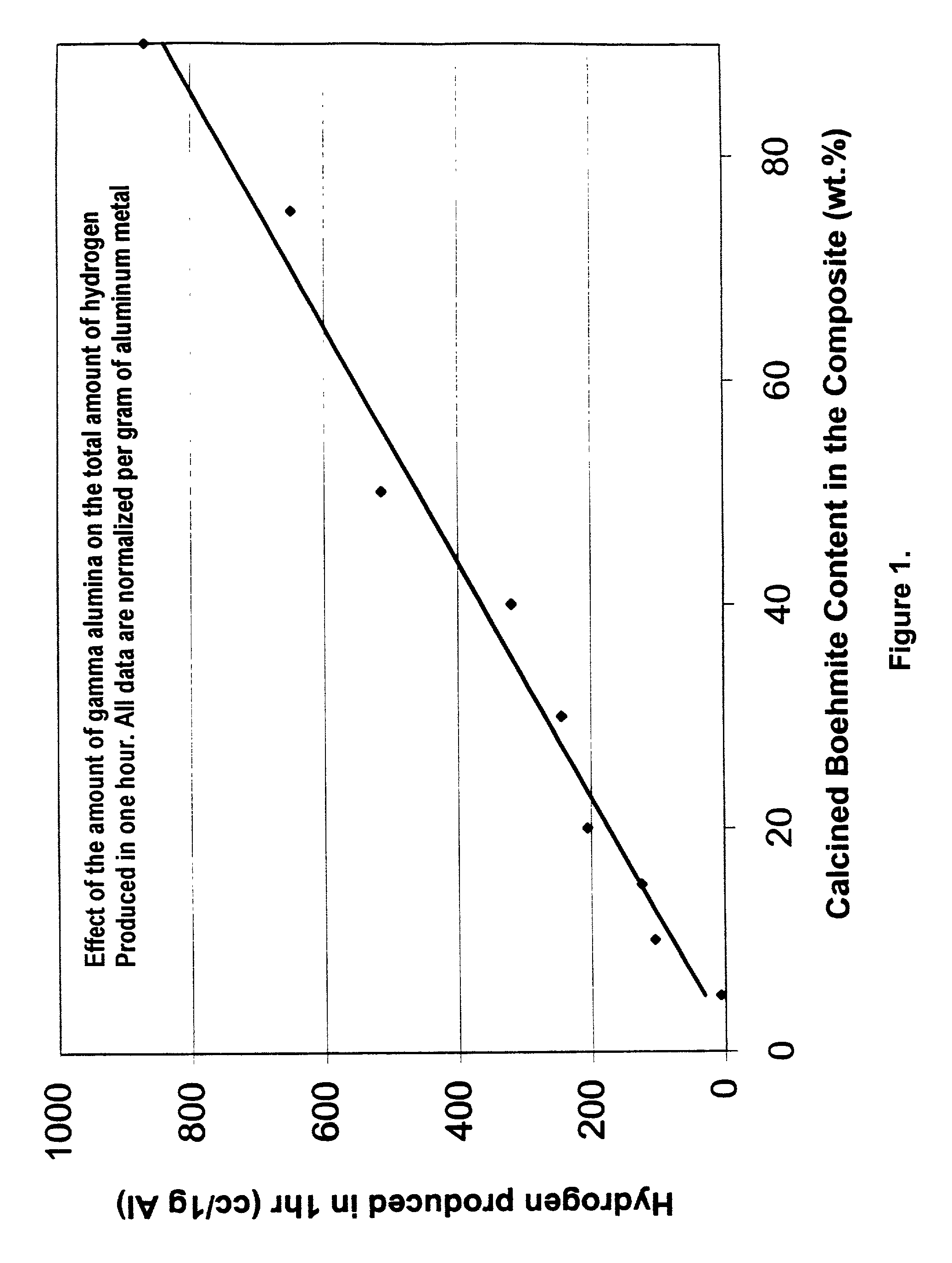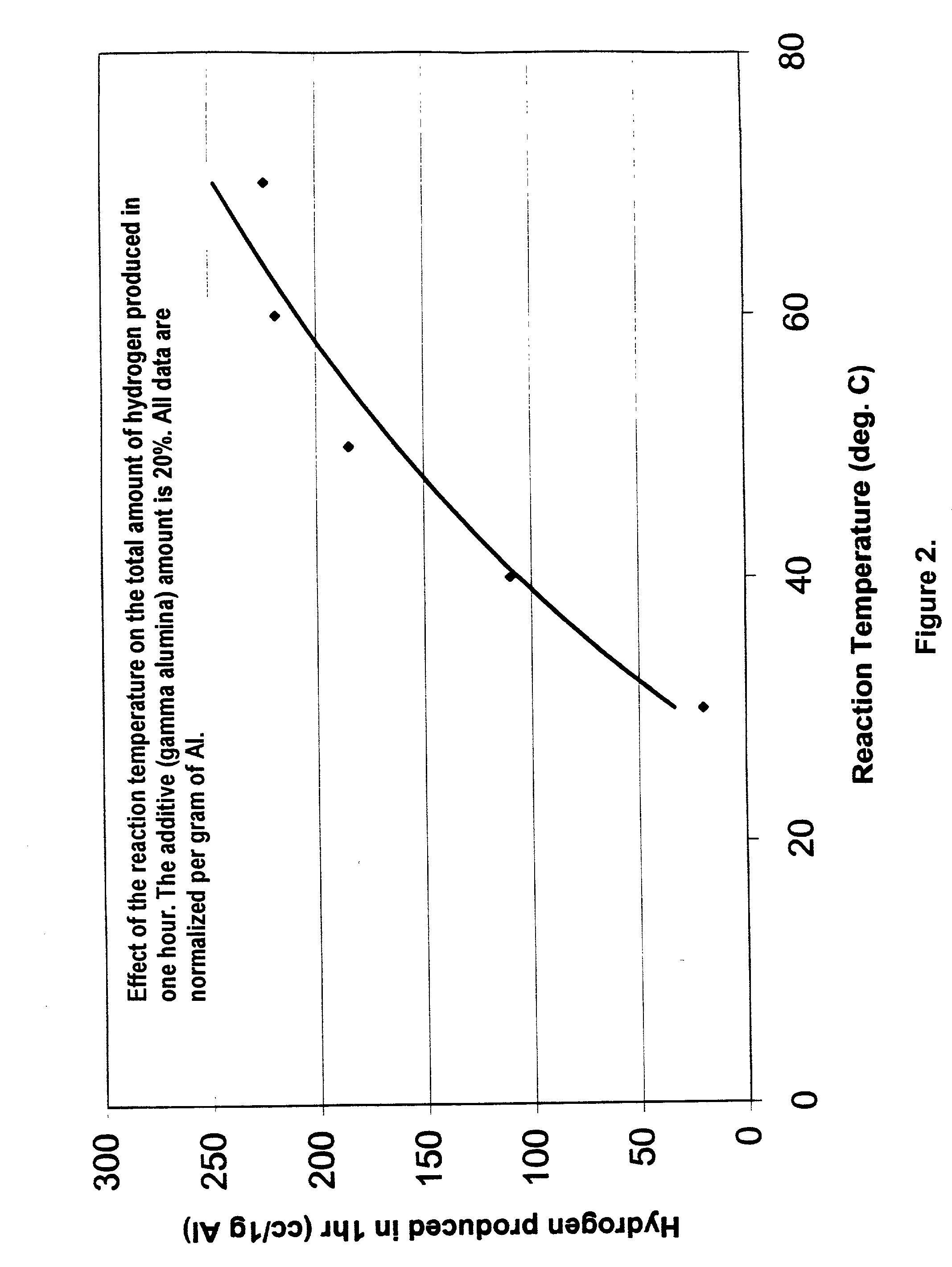Hydrogen generation from water split reaction
a technology of water split reaction and hydrogen generation, which is applied in the direction of hydrogen production, chemistry apparatus and processes, inorganic chemistry, etc., can solve the problems of high cost, high cost, and high cost of hydrogen production, and achieve the effect of reducing cost, avoiding waste, and avoiding was
- Summary
- Abstract
- Description
- Claims
- Application Information
AI Technical Summary
Benefits of technology
Problems solved by technology
Method used
Image
Examples
example 1
Water-split Reaction for the Reference System: Al Powder Only
[0111] The Al powder (99% Al, 80 .mu.m average particle size) was pelletized at 8000 psi and the 1 g pellet dropped to tap water at approximately pH=6 and T=50.degree. C. There was no Hydrogen generation after 1 hr test.
example 2
Water-split Reaction for the Reference System: Al Powder Only
[0112] The Al powder (99% Al, 80 .mu.m average particle size) was Spex-milled for 15 min., pelletized at 8000 psi and the 1 g pellet dropped to tap water at approximately pH=6 and T=50.degree. C. The total amount of Hydrogen released from the reactor after 1 hr was 10 cc per 1 g Al.
example 3
Water-split Reaction for the Reference System: Oxidized Al Powder
[0113] The Al powder (initially 99% Al, 80 .mu.m average particle size) was partially oxidized for 72 hr, which resulted in 0.05% weight increase due to formation of Aluminum oxide layer on its surface. The partially oxidized powder was Spex-milled for 15 min, pelletized at 8000 psi and the 1 g pellet dropped to tap water at approximately pH=6 and T=50.degree. C. The total amount of Hydrogen released from the reactor after 1 hr was 7 cc per 1 g Al.
PUM
 Login to View More
Login to View More Abstract
Description
Claims
Application Information
 Login to View More
Login to View More - R&D
- Intellectual Property
- Life Sciences
- Materials
- Tech Scout
- Unparalleled Data Quality
- Higher Quality Content
- 60% Fewer Hallucinations
Browse by: Latest US Patents, China's latest patents, Technical Efficacy Thesaurus, Application Domain, Technology Topic, Popular Technical Reports.
© 2025 PatSnap. All rights reserved.Legal|Privacy policy|Modern Slavery Act Transparency Statement|Sitemap|About US| Contact US: help@patsnap.com



